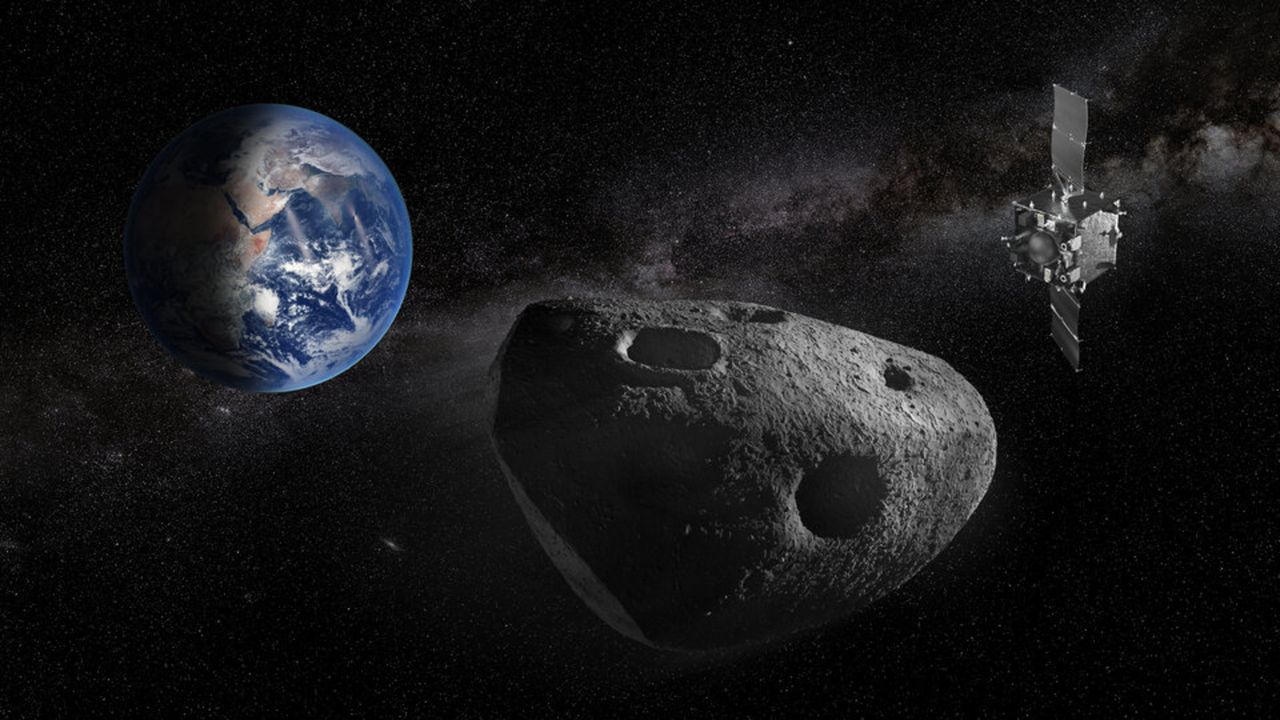Recent research presented at the Europlanet Science Congress in Helsinki has shed light on how asteroids spin in space and identified optimal strike zones for potential deflection missions. This knowledge could be crucial in preventing a catastrophic impact on Earth from a hazardous asteroid.
In two separate studies, scientists explored the dynamics of asteroid rotation and the safest ways to alter their trajectories. One study, led by Wen-Han Zhou from the University of Tokyo, utilized data from the now-retired Gaia mission of the European Space Agency to analyze how an asteroid’s spin is influenced by collisions with other space rocks. The second study, spearheaded by Rahil Makadia of the University of Illinois at Urbana-Champaign, developed methods to identify the safest regions on asteroids for impact during deflection missions.
Understanding Asteroid Spin Dynamics
Determining how asteroids spin has puzzled astronomers for decades. Some asteroids rotate smoothly, while others exhibit chaotic, tumbling motions. Zhou’s team sought to unravel this mystery using extensive data from Gaia. Their research revealed that an asteroid’s spin behavior is largely influenced by a cosmic “tug of war” between two opposing forces: collisions that induce instability and internal friction that stabilizes rotation.
Zhou noted, “When these two effects balance, they create a natural dividing line in the asteroid population.” By applying machine learning techniques to Gaia’s dataset, the researchers identified a clear distinction between fast-spinning asteroids and those that tumble erratically. They discovered that slower rotators are more susceptible to being jostled by impacts, while faster ones resist disturbances.
Interestingly, the study also highlighted the role of sunlight in asteroid rotation. As an asteroid’s surface heats during the day and cools at night, it emits tiny bursts of radiation that can influence its spin. For smoothly rotating asteroids, these radiation pushes align in a way that gradually alters their spin rate. Conversely, tumbling asteroids experience opposing forces, leading to their erratic behavior.
The findings suggest that many asteroids are not solid, but rather loose aggregates of rocks and dust, often referred to as “rubble piles.” This distinction is significant for planetary defense, as a fragile asteroid would react differently to a spacecraft impact compared to a dense one.
With the advent of more advanced sky surveys, Zhou anticipates that their methods can be applied to a larger population of asteroids. Upcoming projects, such as the Vera C. Rubin Observatory’s Legacy Survey of Space and Time, will allow researchers to refine their understanding of asteroid evolution and composition.
Identifying Safe Impact Zones
While understanding an asteroid’s spin is a critical first step, determining where to strike is equally essential. Makadia’s research focused on the implications of spacecraft impacts on asteroids. Their simulations revealed that not all impact sites are equal. Striking an asteroid in the wrong location could lead to what is known as a gravitational keyhole, a specific area in space where a planet’s gravity could later redirect the asteroid back towards Earth.
“Even if we intentionally push an asteroid away from Earth with a space mission, we must ensure it doesn’t drift into one of these keyholes afterwards,” Makadia explained. To mitigate this risk, the team developed probability maps for asteroid surfaces that can guide mission planners toward safe impact sites.
Utilizing insights from NASA’s DART mission, which successfully impacted the asteroid Dimorphos in September 2022, the researchers simulated millions of kinetic-impact missions with varying parameters. Each simulation focused on how an asteroid’s motion could change based on different impact points and rotation angles. This process enabled them to identify optimal strike zones that would effectively alter an asteroid’s trajectory while minimizing the risk of future encounters with Earth.
To validate their model, the team applied their findings to the near-Earth asteroid Bennu, which has been extensively studied through NASA’s OSIRIS-REx mission. Earlier assessments of Bennu indicated several potential gravitational keyholes that could redirect its path toward Earth in the 22nd century. However, the precise data obtained from OSIRIS-REx significantly reduced these uncertainties.
Makadia’s team created detailed impact-probability maps for Bennu, illustrating which impact areas pose the least risk for future trajectories. The highlighted optimal strike zones suggest where a spacecraft can nudge Bennu’s orbit away from Earth without triggering a dangerous return.
The researchers concluded that these analytical techniques could facilitate the design of safer asteroid deflection missions, even when relying solely on ground-based observations. “Fortunately, this entire analysis, at least at a preliminary level, is possible using ground-based observations alone, although a rendezvous mission is preferred,” Makadia stated.
As advancements in telescopes and missions continue to reveal millions more asteroids, studies like these are pivotal in developing a comprehensive planetary defense strategy to safeguard Earth from potential impacts.
